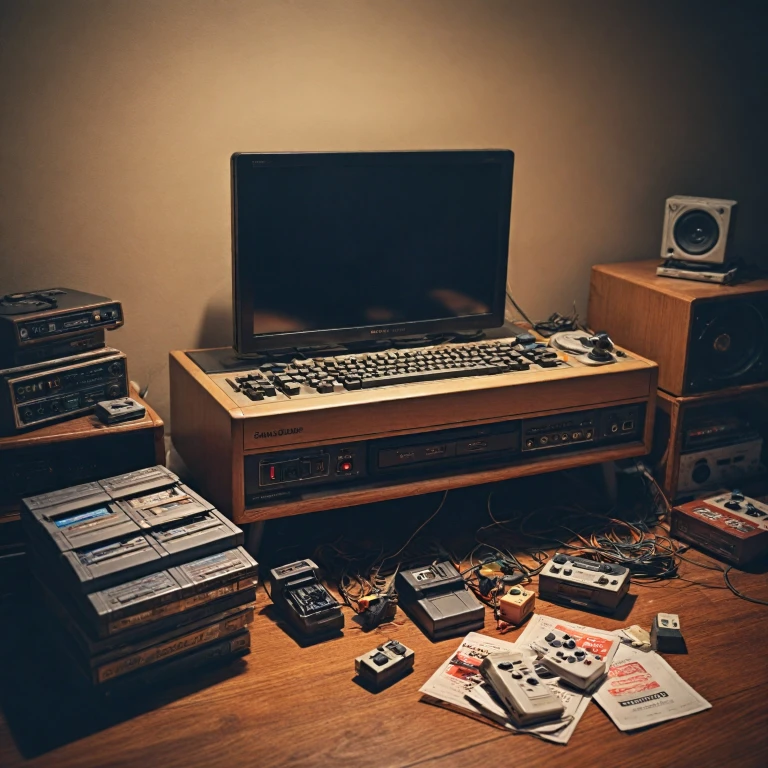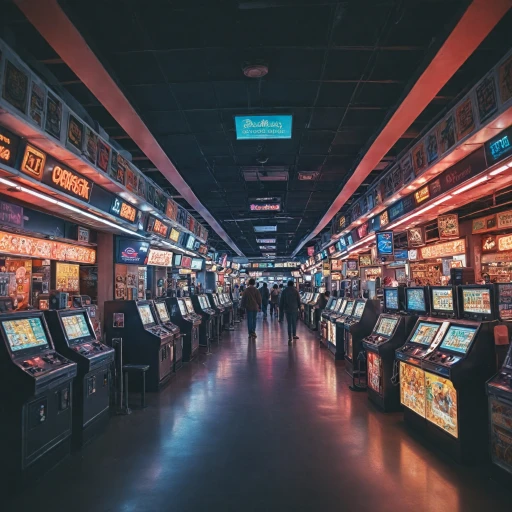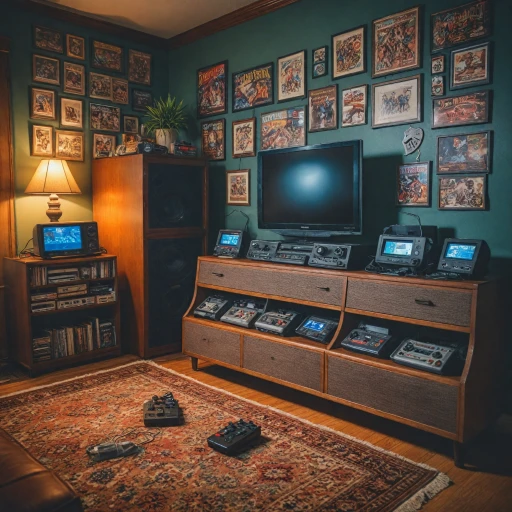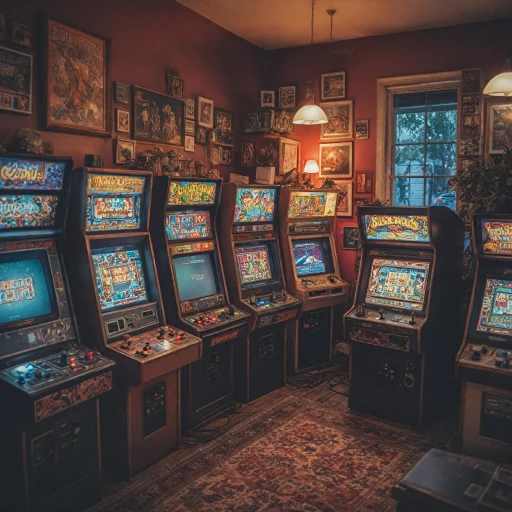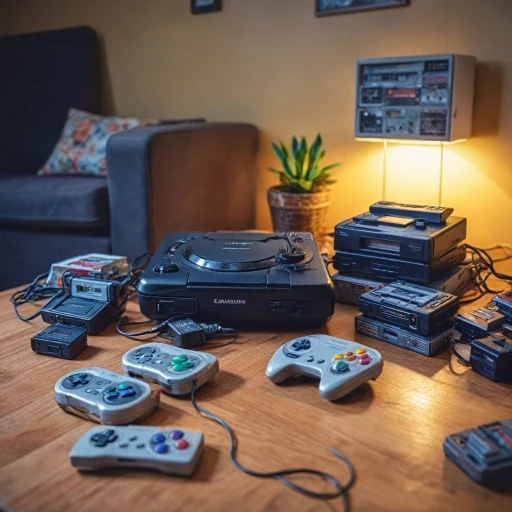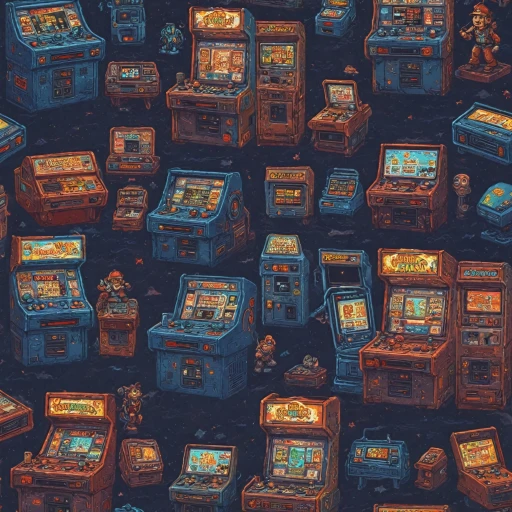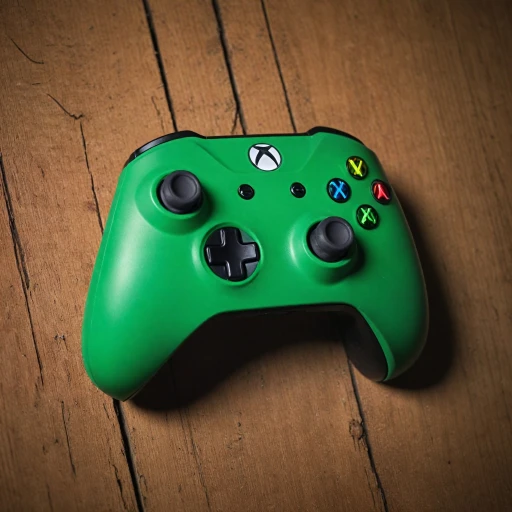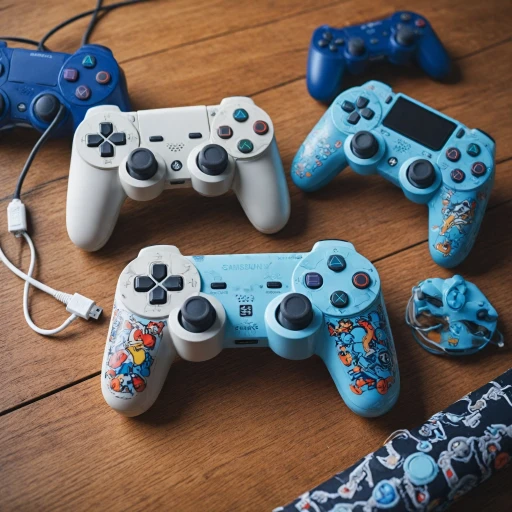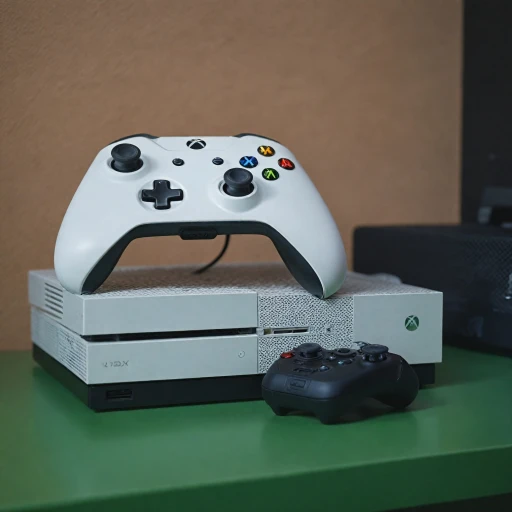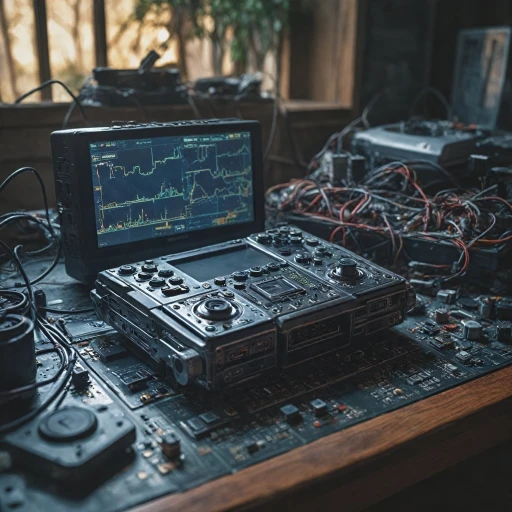
The Birth of the Saturn Console
Genesis of a Gaming Pioneer
The mid-90s saw a thrilling era in the world of gaming with the introduction of the Sega Saturn, a console that would leave its mark in video game history. Launched in 1994, the Saturn represented Sega's ambitious leap into the 32-bit console market, aiming to rival the growing dominance of competitors like Sony PlayStation. With its sleek design and advanced technology, the Saturn console was more than just a product; it was a bold statement from Sega Enterprises, the renowned video game company known for classics like Sonic the Hedgehog. Sega ventured into this competitive landscape with the Saturn model featuring impressive hardware specifications. The console was equipped with dual CPUs, a strategy that showcased Sega's commitment to innovation and set it apart from its competitors. Additionally, the Saturn unit integrated a powerful graphic processor capable of delivering vibrant visuals and smooth gameplay. This console stood at the forefront of technological advancements during its time, offering a glimpse into the future of 3D gaming. With a controller boasting a number of button configurations and a responsive feel, the Saturn provided gamers an immersive and dynamic gaming experience. The console's capacity to handle complex game designs, such as those seen in "Virtua Fighter" and "Panzer Dragoon," was a testament to its advanced infrastructure. These iconic games not only pushed the technical limits of the Saturn but also defined their genre, creating a lasting legacy in the gaming community. Despite the polished features and its initial wave of success in Japan, the Saturn faced its own set of challenges, including stiff competition from industry giants like Sony and the subsequent Microsoft Xbox. The market dynamics and saturn box variations reflected strategic efforts to maintain relevance alongside evolving gamer expectations. However, this diverse model offering did little to secure a large share of the global market, especially in contrast to the widely popular Sony PlayStation. Today, the Sega Saturn stands as a cherished relic among collectors and enthusiasts. Bearing witness to an intriguing chapter in gaming history, its story is celebrated by those who appreciate the charm of the past. To delve into more about the golden age of retro consoles and games, explore the top TurboGrafx-16 games for enthusiasts that stirred similar passion during the era.Technical Innovations and Features
Pioneering Innovation at the Heart of Gaming
The release of the Sega Saturn in 1994 marked a significant moment in gaming history, marked by Sega Enterprises' ambitious leap into 32-bit technology. As a console known for pushing the boundaries of what was technically possible, the Saturn showcased a number of technical innovations and features that set it apart from its contemporaries. Distinctive for its dual CPU architecture, the Saturn was constructed with two Hitachi SH-2 microprocessors. This powerful combination was designed to enhance graphics processing and deliver superior 3D rendering capabilities. However, this complexity also posed challenges for game developers, who found the system’s architecture difficult to harness effectively. Despite this hurdle, the technical prowess of the Saturn allowed it to host visually impressive titles like "Virtua Fighter" and "Panzer Dragoon." Additionally, the Saturn was celebrated for its robust audio capabilities, with a 32-channel sound processor that rivaled other consoles of the time. These sound components contributed to immersive gaming experiences, evident in its critically acclaimed titles. Most notably, the Saturn was among the first consoles to experiment with innovative features such as in-box variations of the model Saturn controller, each boasting different button layouts to cater to varying game styles and player preferences. Noteworthy versions included the original oval button Sega and the subsequent button Sega controller, which offered a refined gaming response. By embracing CD-ROM media, the Saturn facilitated enhanced game development, with space for larger, more intricate games than its cartridge-based predecessors. This advancement enabled the development of complex titles that expanded narrative possibilities and interactive experiences. However, despite its forward-thinking technology, the Saturn struggled to maintain market dominance. Discover more about how the Sega Saturn's innovative features contributed to the retro gaming experience by exploring our in-depth analysis on the Sega Genesis Mini here.Challenges and Competition
A Battle on Multiple Fronts: Navigating Market Competition
The Sega Saturn, with its impressive technical innovations, had the potential to set new standards in the gaming industry. However, the challenges it faced in the fiercely competitive market were formidable. The console was launched during a period when competition was at its peak, with other major players jockeying for dominance. Among the key competitors was the Sony PlayStation, which not only matched the Saturn's capabilities but also boasted an extensive list of available games that drew in consumers.
A critical factor in this battle was the timing of the Saturn's release. While Sega attempted to seize a strategic advantage by launching earlier, the hasty rollout meant many developers were caught unprepared. This resulted in a limited selection of video games available at release – a stark contrast to Sony's well-timed Sony PlayStation launch, supported by a broad and appealing game library.
Furthermore, marketing challenges also contributed to the difficulties faced by the Saturn. Sega's strategy did not effectively communicate the unique features of the system, such as the six-button Sega controller, and the advanced technical prowess that enabled stunning graphics on titles like Virtua Fighter and Panzer Dragoon. Compounding these issues were the variations in distribution, with different box variations and the number of units available in regions such as Japan diverging from Western markets.
An additional layer to this competition involved Microsoft and Nintendo. The emergence of the Microsoft Xbox and the enduring popularity of the Game Boy added pressure, heavily influencing consumer choices. Although the Sega Saturn did host remarkable games like Daytona USA and Sega Rally, they struggled against the broader palette of options presented by rivals.
Ultimately, Sega Enterprises' endeavor to solidify the Saturn as a market leader was thwarted by these multifaceted challenges. Examining this period reveals parallels not only with the race between the Xbox One and similar consoles (detailed here) but also with past console wars. Understanding this history provides valuable insights into the dynamics of console competition and the strategic imperatives for future gaming consoles.
Iconic Games and Software
Celebrating the Standout Titles and Software
The Saturn's library holds a number of iconic video games that reflect the console's potential and unique technological prowess. Despite the fierce competition from industry giants like Sony PlayStation, the Saturn managed to carve out its niche with memorable titles that continue to inspire admiration among gamers.- Virtua Fighter Series: A groundbreaking series during its time, the Fighter Remix version displayed the Saturn's capacity for 3D graphics rendering. This title became an emblematic representation of Sega's commitment to arcade-quality home gaming, with its distinctive button and controller layout offering a truly authentic experience.
- Sega Rally Championship: This title was another testament to the Saturn's capability to merge the thrill of arcade racing with home entertainment. Its multifaceted game dynamics and realistic driving mechanics set new standards for racing games, encouraging the development of future racing simulators.
- Panzer Dragoon: The series bolstered the Saturn's image as a console capable of delivering epic storytelling alongside revolutionary gameplay. With its cinematic style and unique rail-shooter mechanics, Panzer Dragoon is often highlighted as one of the must-experience games for Saturn enthusiasts, providing a striking contrast to other video game offerings at the time.
- Daytona USA: Originally an arcade hit, its adaptation to the Saturn demonstrated the system's power in bringing high-octane excitement to players' homes. The game's popularity affirmed Sega's stronghold in the arcade racing genre, leveraging the Saturn unit's capabilities to deliver a near-seamless transition from arcade cabinets to living rooms.
Cultural Impact and Legacy
Enduring Cultural Influence of the Saturn
The Sega Saturn not only represented a bold step in innovation for Sega Enterprises, but also left an indelible mark on the cultural landscape of gaming, despite its commercial challenges. Emerging during a dynamic era of advancement and competition, the Saturn console played a critical role in shaping the industry’s evolution.
While the Saturn struggled against the dominant forces of the Sony PlayStation and later the Microsoft Xbox, its failure was not universal. In Japan, it cultivated a passionate fan base, drawn by its impressive roster of exclusive titles and rich library of arcade-inspired game variations, including beloved franchises such as Virtua Fighter, Sega Rally, and Daytona USA. These games not only showcased the system's technical prowess but also their distinct appeal in capturing the spirit and excitement of arcade gaming.
The Sega Saturn also played a pivotal role in enhancing the appreciation for polygon-based video game graphics, leaving a legacy that's recognized by players and developers alike. The console’s capacity to handle complex 2D graphics with ease made it a paradigmatic platform for 2D titles, influencing the design and aesthetic choices of developers long after its lifespan.
Additionally, the Saturn's controller, featuring a unique six-button layout, attracted gamers who favored the extensive input options suitable for a wide variety of games, from fighters to shoot-'em-ups. This controller design has influenced console controllers in successive designs, leaving a subtle imprint on the gaming interface that continues to be felt.
Even today, the affection for the Sega Saturn endures among retro gaming communities and collectors. Enthusiasts seeking a nuanced and distinctive gaming experience often turn to the Saturn, appreciating the console’s historical significance and distinctive library. This has contributed to a vibrant market for box variations and rare models, making the Saturn not merely a relic of the past, but an ongoing part of gaming’s diverse and evolving structure.
Collecting and Preserving the Saturn Console
Preserving a Cult Classic: The Appeal of Saturn
The Saturn console, a revered product of Sega Enterprises, has become a notable collector's item in the world of gaming. For enthusiasts and collectors alike, the appeal of this iconic system goes beyond nostalgia, encapsulating a significant era in video game history. The console's unique features and the challenges it faced against heavyweights like Sony's PlayStation have only added to its allure.Understanding the Appeal of Collecting Saturn Consoles
Collecting the Sega Saturn isn't just about getting a piece of gaming history; it's about owning a part of an era characterized by groundbreaking innovations and fierce competition. Below are some reasons why the Saturn has carved a niche among collectors:- Rare Box Variations: The Saturn's different box variations, from the original launch to subsequent re-releases, make each unit unique. These variations often contain visual differences that are a collector's delight.
- Limited Model Numbers: With model Saturn including rare iterations like the Sega Saturn HST, each represents a specific chapter in its production history, making them appealing to those who wish to complete a collection.
- Iconic Game Library: While the Sega Saturn's library may not be as vast as that of the Sony PlayStation, its titles such as Daytona USA and Panzer Dragoon have attained cult status, driving demand for both the games and the console.
- Unique Controller Designs: With its distinctive button layout, the Sega controller is a draw for those who appreciate unconventional hardware design that was ahead of its time.
Challenges and Tips for Preservation
Preserving a Saturn console requires careful attention to maintain its functional and aesthetic condition. Here are practical steps to ensure your unit remains in top shape:- Avoid Overexposure: Keep the console away from direct sunlight and excessive heat which could damage its components over time.
- Routine Cleaning: Regularly dust the console and its controllers, ensuring that no debris accumulates around buttons or ventilation grids.
- Use Original Packaging: Storing the console in its original box can help protect it when not in use, maintaining both its physical integrity and resale value.
- Backup and Protect Games: As optical discs can degrade, consider creating digital backups of your Saturn games to safeguard your collection.
